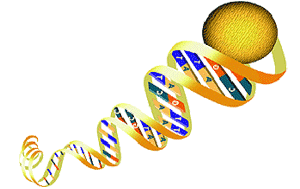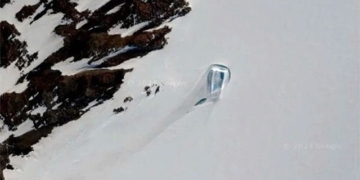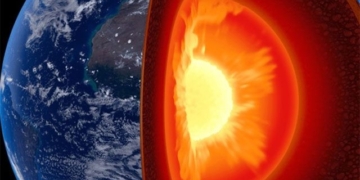The human genome map has recently been decoded by scientists around the world after successfully decoding chromosome 1, the longest chromosome among the 23 pairs. What does this event mean for global scientific fields in general and for the scientific community in Vietnam in particular?
 |
|
DNA Model (Photo: good.pasteur) |
Associate Professor Dr. Lê Trần Bình, Director of the Institute of Biotechnology (Vietnam Academy of Science and Technology), stated:
– The actual length of chromosome 1 is 263 million nucleotides and is responsible for the inheritance of 149 known traits. This is a significant advancement in the Human Genome Project (HGP), a collaborative effort involving 10 developed countries.
* It is known that the completion of the human genome map is extremely important for the research and treatment of chronic diseases?
– That’s right. With the map in hand, we can reach our destination. The human body is an incredibly complex and sophisticated machine. Having a genome map is like having a “blueprint” for controlling that system.
Knowing the location of genes allows medical scientists to repair or replace defective genes. This is the gene therapy that doctors have long dreamed of implementing. If gene replacement is not feasible, it is possible to produce proteins that are products of those genes and introduce them into the body to replace faulty or deficient proteins due to gene function abnormalities.
These therapeutic proteins created by healthy genes are invaluable, with significant healing effects for patients and highly attractive commercial value for pharmaceutical companies. Therefore, companies are willing to invest heavily in this research.
* In your opinion, what role will the complete decoding of the human genome map play in scientific research in Vietnam?
– The globalization of information presents both opportunities and challenges for our scientific community. Understanding and interpreting this information, similar to a scout reading a map, will effectively guide the aforementioned applications and potentially allow for the creation of detailed maps of endemic regions.
For example, understanding the genomic characteristics of Vietnamese people in general and the 54 ethnic groups living in Vietnam could orient more effective disease prevention and treatment strategies, contributing to the advancement of science.
Vietnam is also conducting research projects using stem cells derived from bone marrow for treatment. Why not consider repairing, replacing, or supplementing some healthy genes for these cells to treat blood disorders or other severe diseases?
In Vietnam, there are studies on human genes aimed at identifying characteristics for determining lineage, identity, and individual recognition, as well as research evaluating the genomic characteristics of ethnic groups living in Vietnam and studies on changes in human genomes due to chemical agents from war.
There are also several studies on genetic diseases in newborns, children, and adults. Science requires the accumulation of experience, data, and knowledge. We are not ignoring this but are paying attention to it and may need to focus more on it in the near future.
* As you mentioned, the work remaining after the completion of the human genome map is still substantial?
– Currently, the science in this field is generally referred to as “post-genomic,” or, more broadly, the “omics” era of life sciences. Discovering the biological functions of over 50,000 genes requires significant effort, funding, and expert knowledge.
Even after identifying most of their functions, the research on their interactions and their systemic properties is crucial.
One can simply compare it as follows: reading the nucleotide sequence is like a child just finishing the first semester of first grade, meaning they know the letters and can pronounce any article in a newspaper, but surely that child hasn’t understood the meanings of many words, sentences, or the entire article.
Mapping the genome at the current level means knowing a bit more about what articles are on which pages, akin to a first grader learning a few titles and page numbers. The remaining work is to understand the entire newspaper.
Not only that, but there is also the task of editing, which means correcting errors, cutting, adding, or modifying content to ensure the quality of the newspaper. The scientific journey is still long, just like a child who has just completed first grade striving to become an excellent editor-in-chief.
KHIẾT HƯNG


















































